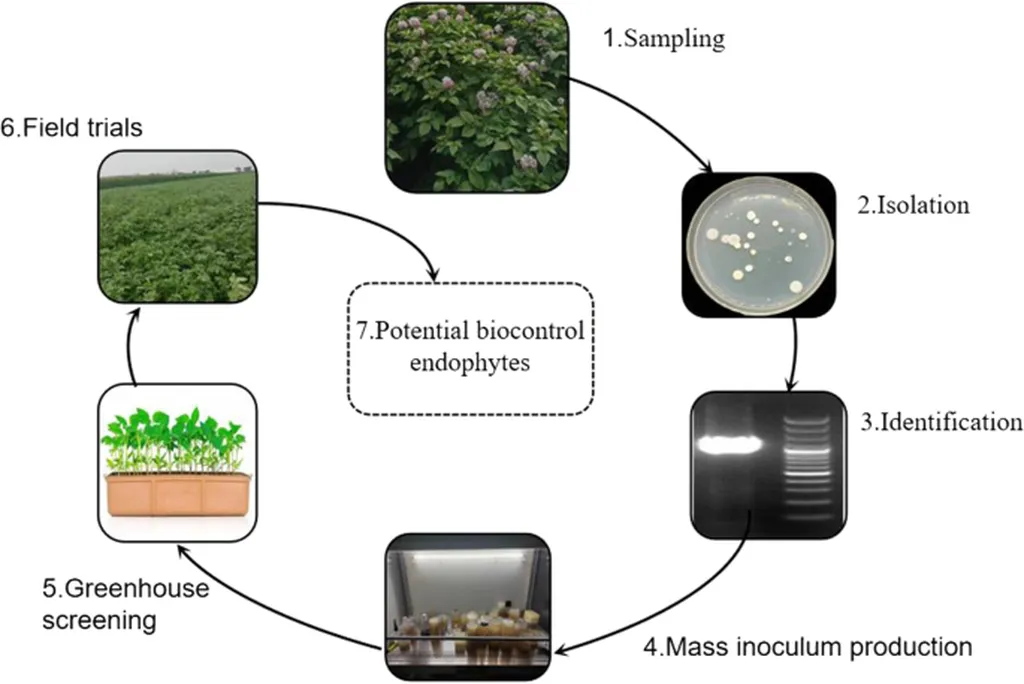In the heart of sustainable agriculture research, a groundbreaking study has unveiled the intricate dance between potato plants and their microscopic partners, the endophytes. These tiny inhabitants of plant tissues, often overlooked, play a pivotal role in plant health and resilience. A recent study published in the *Journal of Plant and Microbial Communities* (Phytobiomes Journal) has shed light on how different potato cultivars and growing conditions influence the diversity of these endophytic microbial communities, offering promising insights for the future of agriculture.
Led by Jyotsna Nepal at Université de Pau et des Pays de l’Adour in France, the research team employed advanced sequencing techniques to explore the endophytic communities in potato roots. By comparing plants grown in two different soils in greenhouse conditions and plantlets grown in agar media, the study aimed to understand the impact of soil microbiomes and plant genetics on these internal ecosystems.
The findings were striking. The growing conditions significantly influenced the diversity of endophytic bacteria. “We found that the bacterial endophytic community in plants grown in soils was mainly represented by the Pseudomonadaceae family, while for in vitro plants, the Paenibacillaceae family was the main representative,” Nepal explained. This suggests that soil microbiomes play a crucial role in shaping the bacterial communities within potato plants.
The study also revealed that both soil types and potato cultivars affected fungal diversity. Interestingly, the identity of the potato cultivars had a stronger effect on fungal communities compared to bacterial ones. “The fungal community comprised many possible fungal pathogens, such as Colletotrichum, Fusarium, and Verticillium,” Nepal noted. This highlights the complex interactions between plant genetics and microbial communities, which can have significant implications for plant health and disease resistance.
The implications of this research extend beyond the field. Understanding these interactions can help design sustainable agricultural strategies that harness the power of microbial communities to enhance crop resilience and productivity. For the energy sector, this could mean more efficient bioenergy crops, as healthier plants can lead to higher yields and better-quality biomass for energy production.
As we look to the future, this study underscores the importance of considering both the soil microbiome and plant genetics in agricultural practices. By doing so, we can unlock the full potential of these microscopic partners and pave the way for a more sustainable and productive future in agriculture and beyond. The research was published in the Phytobiomes Journal, a testament to the growing recognition of the critical role that plant-microbiome interactions play in our ecosystems.

